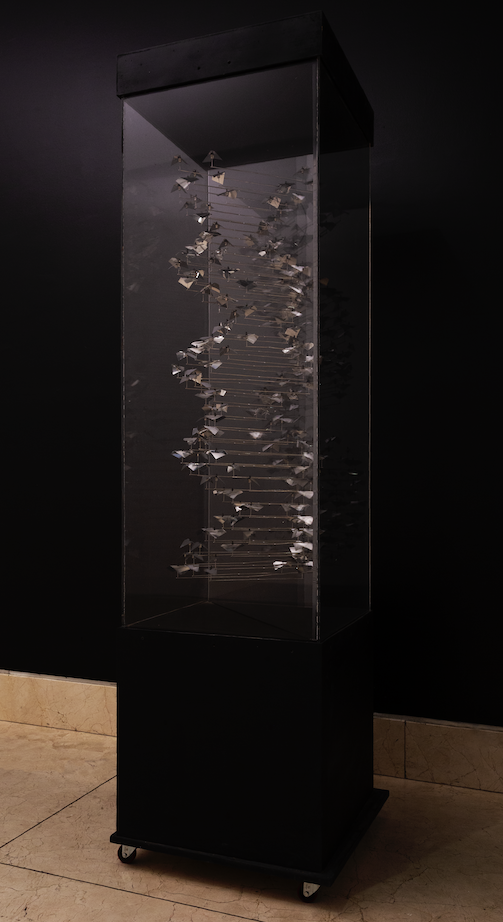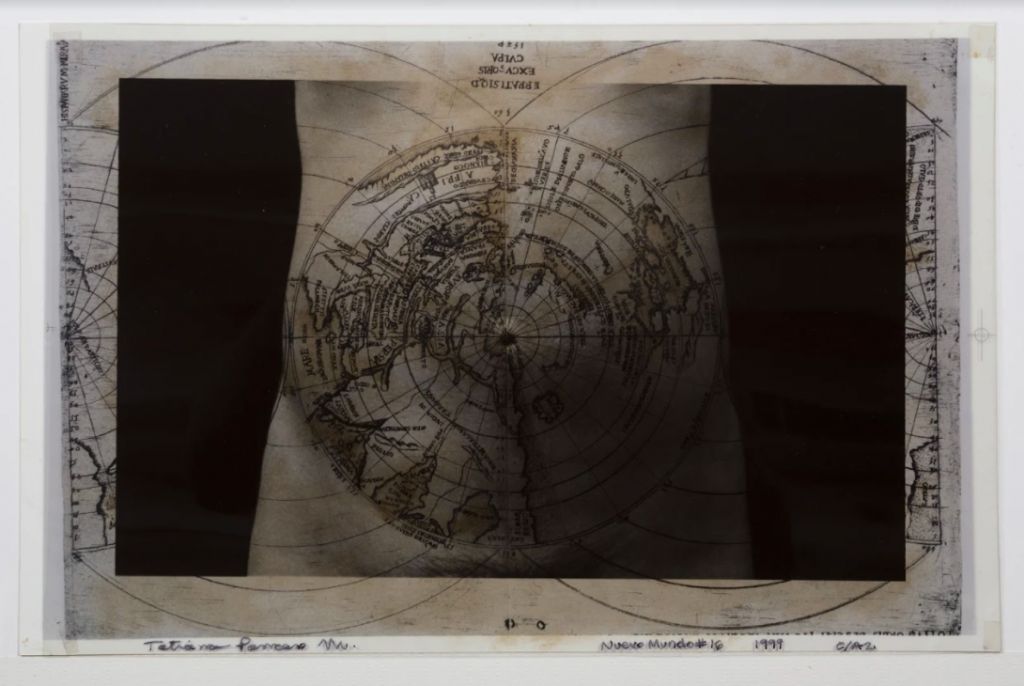Amazement lurks in the hidden corners of our everyday lives, camouflaged by what we think of as certainty, the knowledge that allows us to get on with our lives day after day. It is thus forever watchful by nature, waiting for its moment to appear suddenly and powerfully when we are shaken by the unknown. Amazement gets into our skin, eyes and ears when we are faced with a vision of something new, a discovery or apparition that alters our emotional or intellectual state and questions our logic.
Sometimes it becomes paralyzing uncertainty when something threatens to change our world comprehensively and forever, depriving us from our freedom to act. But mostly amazement relieves us of the infinitely repetitive parade of things we have already seen.
We don’t always want to know the explanation behind the things that amaze us. Sometimes we’d like to linger for a time within it, glorying in its magic, the wonder of discovery and provocation, which can never last. That is also what happens when we encounter art, when we share in the state of amazement artists feel when observing reality. Certain in the knowledge that amazement is always out there waiting for us, with many unexpected twists and turns that might inspire us or awaken our desires, the Museo Moderno will over the next few weeks gather together work by artists that wow and excite us. Moving and bewildering, their gazes and artworks renew our bond with our surroundings, showing them in a new light – the one cast by their own amazement.
Perla Benveniste, Espacios inhabitables, 1970/2011, caja cinética de tubos con agua, luz y sonido y performance, 180 x 150 x 250 cm
Eduardo Rodríguez, Nunca te bañarás dos veces en el mismo río, 2013, acrílico, acetato metalizado y movimiento, 200 x 53 x 53 cm
Obras donadas por los artistas al Museo de Arte Moderno de Buenos Aires en diciembre de 2020.

Querida máquina [Dear Machine] is a video in an educational tone and full of humour in which artist Belén Romero Gunset shows a series of drawings while explaining to a machine the basis of her philosophical system. Her system, structured from a series of argumentative formulas – such as refutation, contradiction or disqualification – and a limited color palette, allows her to organize the drawings and paintings, which encode in their imagery metaphysical questions about the contemporary condition that the artist finds represented in everyday objects and situations.
Thus, two apples can be faced with the question of “to be or not to be”; the shape of a cassette is a reminder of the need to not repeat ourselves and to always change; and the action of drinking mate under an ombú tree can symbolize “the difference between merely existing and living the experience.” Created during the 2020 lockdown using colored pencils, these witty, didactic and school-like drawings humorously revisit the possibility of philosophical thought, in which amazement expands the material confines of our homes into a space of transcendental grace.
An interview by Escuchar (Sonidos visuales) [Listening (Visual Sounds)]
Escuchar (Sonidos visuales) [Listening (Visual Sounds)], our experimental music cycle, presents this interview with one of the most important voices of the discipline in the world, the Spaniard Francisco López. The interview is conducted by our curators, Jorge Haro and Leandro Frías. Audiosfera. Experimentación sonora 1980-2020 [Audiosphere. Sound Experimentation 1980-2020] is an exhibition curated by Francisco López that includes no objects or images, but which aims to reveal to the visitor the vast and dynamic universe that is the field of experimental audio.
The exhibition includes more than 700 sound works by some 800 creators from around the world, many of them unknown to the public. This is the first exhibition of its kind in the world.
Throughout his artistic career, Juan Sorrentino has sought to explore the different ways in which the most common materials can express themselves. Wood, dust, sheet metal and other items can become the germinal elements of his work. Somewhere between performance and sculpture, he reveals the aesthetic power of textures, sounds and natural forms.
In this video, the artist carries around a blank canvas that is larger than his own body, and uses the shadows cast by the branches of the woods to create ephemeral drawings on the canvas. The artist thus becomes a simple prop and nature is the creative agent that provides unexpected artistic moments of great sensitivity and lyricism. Though in his most recent works, Sorrentino seeks to maximize the sound or resistance capabilities of certain materials, in Untitled (2015) he emphasizes the softness and calm that can be glimpsed in nature, which acts as an artistic signaling of a fact as simple as it is beautiful.
Sebastián Díaz Morales makes use of each of the tools of video and audiovisual language in his work. Inspired by the documentary and potentially imaginative power of this artistic form, Díaz Morales works at the meeting points between these spheres. On the one hand, he insists on highlighting the real source of the sites, objects and people who participate in his works, and yet he also looks for the openings where that same reality can twist towards something amazing and incomprehensible.
In Oracle (2007) he gathers a large number of informal records of extraordinary events that occurred in different cities around the world, with the innocence of an amateur observer. The heterogeneity of the fragments and their indecipherable character, as well as the repetition and rhythm of the montage, are presented with the enigmatic temperature of the Oracles of Antiquity who offered up expectant metaphors. In the free association it invites, the work of Díaz Morales deploys a range of possible clues to find an intimate sense in the excess of the worlds that we are confronted with.
Tatiana Parcero
(México City, 1967)
Sin título [Untitled], from the series “Nuevo Mundo Nº 2” [“New World No. 2”], 1999
20,30 × 30,20 cm
Acetate and hand-painted color photography

Tatiana Parcero’s oeuvre explores concepts such as identity, memory, territory and time. In this piece, skin becomes a large map-tattoo in which pre-Hispanic codices, cartographies and anatomical illustrations are mixed to form a sort of emblem of the Latin American cultural paradigm: different cultural and natural origins coexisting together or in opposition.
In many of our planet’s cultures, the days around December 21st – the winter solstice and longest night of the year for inhabitants of the northern hemisphere, and the beginning of summer in the southern hemisphere – have always been dates of festivities and rituals, which in many cases reach their peak on the 25th. In some cultures, the days represent a renewal of the cycle of life, as was the case of the Kapak Raymy festivities of the Andean region, or the Panquetzaliztli of the Aztecs, which paid homage to the birth of Huitzilopochtli. In ancient Rome, during the Saturnalia, the celebrations even provoked a certain chaos within the normal social order. Later these festivities were stripped of their pagan aspects when Christianity was officially adopted in the empire, and the date of December 25th was established as the birth of Jesus Christ. December celebrations were dedicated to deities associated with light around the world and, this year, they coincide with the closest approach this century of two major planets of our solar system: Jupiter and Saturn. Let’s hope that with 2021, the darkness will lift.
Brillo [Brightness], 2019
Single-channel video
1’ 08”
Interested in situations and actions that extol sensitivity, Triana Leborans dwells on images that manifest themselves in tiny fractions of a second – like certain reflections or flashes of light that appear fleetingly at night – and she seeks to penetrate and explore them in a different time, stopped or slowed down. In this way, from something that was originally invisible, she retrieves a dazzling visual universe that would otherwise be difficult to appreciate: objects or banal surfaces that we capture only briefly, and even less so when we are in permanent movement. Brillo [Brightness] is a clear example of this exercise, which aims to expand the reality of these small things. With surprising simplicity, such as by regulating the brightness of a digital photograph, she discovers a universe of lights on a plastic bottle, revealing that everything can be seen and transformed if we just stop for a moment and fix our gaze upon it.
Time and again, Jorge Macchi turns us into the participants of a manifestation of parallel worlds that are in amazingly attuned harmony. His works are the platform – or the space-time – that makes visible the confluence of different orders, foreign to each other, with a magical precision capable of opening a new path of meaning that activates, without contradictions, something emotionally real: truth as pure sensation. When this occurs, his videos have the particularity of functioning as events: to watch them is to witness the manifestation of a particular phenomenology. This happens exclusively because of the ways in which their form is linked: the rectangular plane upon which the image is arranged, be it the lanes of an avenue or the credits of a film; the captured movement, the time in which the parallel orders flow within those margins; and the sound or music, which enters into a direct dialogue with our consciousness, where, at that moment, that which is dreamlike can take place in a moment of wakefulness. As part of our digital program dedicated to amazement,
The Museo Moderno shares three of Jorge Macchi’s most recognized videos: Caja de música [Music Box], Fin de film [End of Film] (made in collaboration with musician Edgardo Rudnitzky, in 2007) and La balada de Matsuyama [The Ballad of Matsuyama] (2010), which function as fertile fields for apparitions and which invite us to travel, for an instant, to another reality.
Jorge Macchi and Edgardo Rudnitzky
Fin de film [End of Film], 2007
Colour video, stereo sound, 5’ 15”
Jorge Macchi
La Balada de Matsuyama [The Ballad of Matsuyama], 2010
Color video, stereo sound, 06’ 45
Pablo Lapadula understands art and science as two strategies with different but complementary logics, especially in view of the possibility of mutually reinforcing each other’s potential when inquiring into the relationships we have with nature. In this video, produced especially for the Museo Moderno, Lapadula approaches the wonder of the natural world not necessarily from a single moment marked by immediacy, but as an experiential cycle that extends through different spaces and disciplines. Beginning with a library, where stories and representations of science and art intertwine their sensibilities, the artist begins his search for the wild. The narrative of journeys of exploration and the images of traveling painters and naturalists unleash one’s imagination and the yearning for wonder. Then comes the first physical encounter with nature, where everything is more formless than rational. It is an experience that uses the body as the most suitable documentation tool: the sensuality of natural forms begins to imprint on it. And then, returning to the studio, he articulates experience, knowledge and reasoning of the natural world from a personal and subjective platform. In this way, a dialogue is built between the different – which is already open to change – and the multiple, in order to, among other things, transmit our amazement. With this artistic map traced out, we return to the wild from a constructed model of the world, in order to restart the cycle from a new position.
We invite you to use your imagination to invent flowers. They can have petals of different shapes and colours, but they can also have human features, such as eyes or mouths. What will these flowers feel? What are they thinking? Do you dare to draw them? Don’t forget to share your creations with us by tagging us on the museum’s social media.

Summer can be full of surprises and beautiful moments. We invite you to draw and paint those things, activities and people that make you enjoy this season of the year. Don’t forget to share your results with us by tagging us on the museum’s social media.
